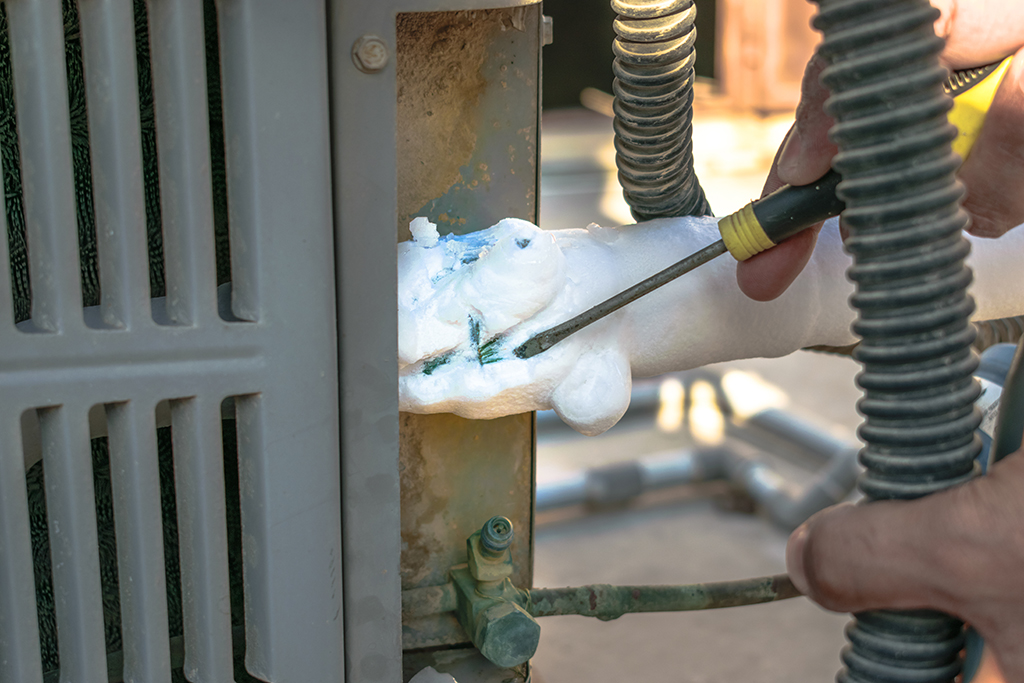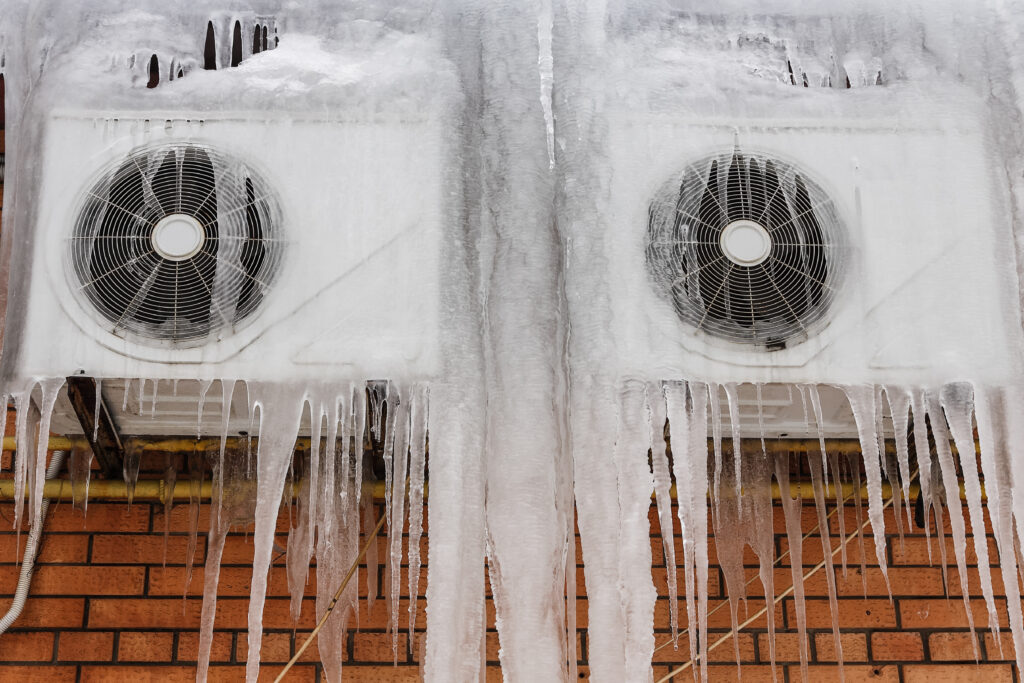Frozen AC Pipe - Recognizing and Fixing the Issue Promptly
Frozen AC Pipe - Recognizing and Fixing the Issue Promptly
Blog Article
We've found the article about Why Is Ice On My Outside Air Conditione listed below on the net and believe it made good sense to relate it with you here.

Introduction
Discovering that your air conditioner pipe is frozen can be concerning, especially during warm summer months when you rely upon your ac unit the most. Understanding what to do in such a scenario is critical to avoid further damages to your cooling system and ensure your comfort inside your home.
Comprehending the Causes
Numerous factors can add to the freezing of an AC pipeline. Comprehending these causes can aid you deal with the problem successfully.
Absence of Airflow
One common reason for a frozen AC pipeline is inadequate airflow. When the air flow over the evaporator coil is restricted, it can trigger the coil to go down below freezing temperature, resulting in ice formation on the pipeline.
Reduced Refrigerant Levels
Insufficient cooling agent degrees in your AC system can also result in a frozen pipe. Reduced refrigerant levels can create the pressure in the system to go down, causing the cold of moisture on the evaporator coil.
Winter Conditions
In cooler environments, freezing temperatures outside can contribute to the freezing of air conditioning pipelines. If your a/c system is not appropriately insulated or if there are leaks in the ductwork, cool air can penetrate the system, triggering the pipeline to ice up.
Dirty Air Filters
Filthy or clogged up air filters can restrict air movement in your air conditioning system, causing different issues, consisting of an icy pipeline. It's necessary to replace or cleanse your air filters consistently to ensure proper air flow and protect against ice buildup.
Indicators of a Frozen Air Conditioning Pipe
Acknowledging the indications of an icy a/c pipe is vital for punctual activity.
Lowered Airflow
If you observe a significant decrease in airflow from your vents, it could indicate a frozen pipe.
Ice Buildup on the Pipe
Visible ice build-up on the cooling agent line or the evaporator coil is a clear sign of a frozen a/c pipe.
Odd Sounds from the Unit
Unusual noises, such as hissing or bubbling, coming from your AC device can indicate that there's ice existing on the pipeline.
Immediate Actions to Take
When faced with an icy air conditioner pipeline, it's important to act swiftly to avoid further damage to your air conditioning system.
Turning off the air conditioner
The primary step is to shut off your air conditioning unit to prevent the system from running and worsening the problem.
Checking for Blockages
Check the location around the interior device for any type of blockages that might be obstructing air flow, such as furniture or drapes.
Defrosting the Pipe
You can make use of gentle techniques like placing towels soaked in warm water around the frozen pipe to help thaw it slowly.
Preventive Measures
Taking safety nets can aid stay clear of future events of a frozen air conditioner pipeline.
Regular Maintenance Checks
Arrange routine upkeep checks with a specialist HVAC service technician to guarantee that your a/c system is running effectively.
Altering Air Filters
Regularly replace or clean your air filters to prevent airflow restrictions and preserve optimum performance.
Insulating Exposed Pipes
If your air conditioner pipelines are revealed to cool temperatures, consider insulating them to stop cold throughout winter months.
Looking For Professional Help
If DIY techniques fail to deal with the problem or if you're unclear concerning exactly how to continue, it's ideal to look for aid from a certified HVAC professional.
When DIY Methods Fail
If your efforts to thaw the pipe or address various other concerns are not successful, it's time to call an expert.
Value of Hiring a Professional HVAC Technician
A certified HVAC service technician has the know-how and devices needed to detect and fix problems with your AC system securely and successfully.
Verdict
Dealing with an icy AC pipeline can be an aggravating experience, yet knowing how to react can help reduce damages and recover comfort to your home. By understanding the causes, acknowledging the indicators, and taking prompt action, you can efficiently deal with the concern and stop future incidents.
What to Do If Your AC Line Is Frozen
Make Sure All Supply and Return Air Vents Are Open
If you notice problems with airflow, the first thing you should do is check your supply and return vents. Supply vents distribute clean, conditioned air throughout your home. As this air becomes stale, it’s pulled into the return vent, where it’s reconditioned before being sent back out through the supply vent.
When these vents are closed, air won’t flow in the home. Before examining your AC, check the vents in every room and ensure they’re all open.
Check for a Dirty Air Filter
Another possible cause of limited airflow is a dirty air filter. Your air conditioner’s filters catch elements you don’t want to breathe in, such as dirt and dust. Over time, filters can become clogged, ultimately blocking air from flowing in and out. The lack of airflow can then cause the entire coil to freeze and will completely restrict any air from moving through it. The AC may need to be powered off for one to two days to allow the coil to thaw after replacing the filter to allow proper functioning of the unit. This debris can also accumulate on your AC’s evaporator coil, requiring a more serious repair. In general, air filters should be cleaned regularly (about every two weeks).
Assess Your Outdoor Unit
In addition to checking your AC, assessing the outdoor unit is a good idea. Also known as the condensing unit, it works with your interior unit to release heat outside. An issue with the outdoor unit can result in rising internal temperatures.
Overgrown Shrubs or Clogged Leaves
From leaves and twigs to shrubs and debris, there’s no shortage of outdoor elements that can accumulate around your condensing unit. When these elements get lodged inside the unit, they can block airflow. Fortunately, removing the blockage can solve the problem.
Sounds of a Broken Fan
Shrubs and leaves aren’t the only things that can impede your outdoor unit’s airflow. If the fan is broken, the unit won’t be able to properly get rid of heat — which means the internal temperature won’t go down. First, make sure the fan is spinning. If it is, check for the following sounds of a broken fan:
Buzzing Rattling Screeching Hissing Clicking Preventative Measures
Nobody wants to deal with a frozen AC line. In addition to causing problems with your air conditioner, they require professional repairs. On the bright side, there are preventative measures you can take to help ensure this issue doesn’t arise in the first place.
https://www.coopergreenteam.com/blog/what-to-do-if-ac-line-frozen

I recently found that review about What Do I Do If My AC Pipe Is Frozen while looking around the search engines. Sharing is nice. You just don't know, you may be helping someone out. I am grateful for your time. Please come by our blog back soon.
Source Report this page